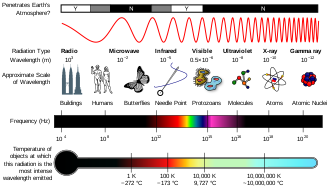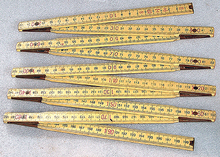|
Centimetre
Look up centimetre in Wiktionary, the free dictionary.  A centimetre or centimeter (US/Philippine spelling), with SI symbol cm, is a unit of length in the International System of Units (SI) equal to one hundredth of a metre, centi being the SI prefix for a factor of 1/100.[1] Equivalently, there are 100 centimetres in 1 metre. The centimetre was the base unit of length in the now deprecated centimetre–gram–second (CGS) system of units. Though for many physical quantities, SI prefixes for factors of 103—like milli- and kilo-—are often preferred by technicians, the centimetre remains a practical unit of length for many everyday measurements; for instance, human height is commonly measured in centimetres.[2][3] A centimetre is approximately the width of the fingernail of an average adult person. Equivalence to other units of length
One millilitre is defined as one cubic centimetre, under the SI system of units. Other usesIn addition to its use in the measurement of length, the centimetre is used:
Unicode symbolsFor the purposes of compatibility with Chinese, Japanese and Korean (CJK) characters, Unicode has symbols for:[6]
These characters are each equal in size to one Chinese character and are typically used only with East Asian, fixed-width CJK fonts. See alsoReferences
External links |
||||||||||||||||||||||||
